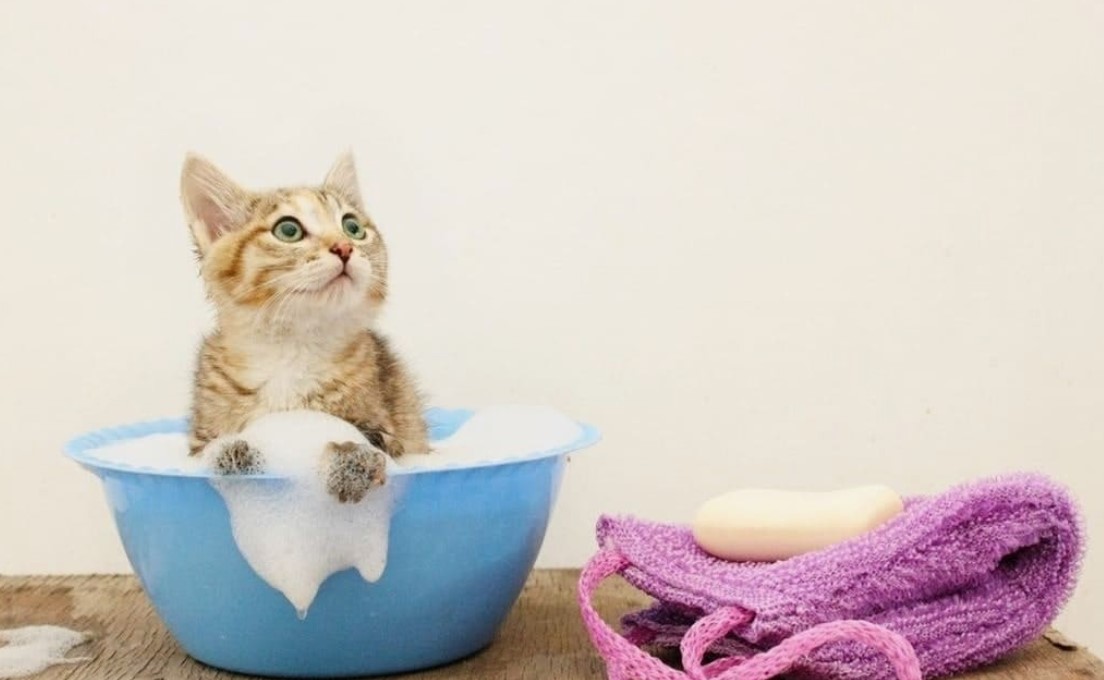
Dandruff is a prevalent yet often overlooked issue in cats. It manifests as dead skin particles that fall off when the outer layer of the skin, or dermis, renews itself. While minor flaking is a natural part of the skin’s regeneration process, excessive dandruff can indicate underlying health or environmental issues that require attention. This article will provide a detailed exploration of dandruff in cats, covering its causes, types, potential complications, and effective treatment strategies. For pet owners in the UAE, consulting a Dubai veterinary clinic is crucial for diagnosing and treating dandruff effectively, ensuring the best care for your feline.
Understanding Dandruff in Cats
Dandruff in cats occurs when the uppermost layer of the skin dies and sheds in the form of small, visible flakes. In small amounts, this shedding is normal and not a cause for concern. However, when these flakes become numerous or more prominent, it suggests that something is disrupting the skin’s balance. Dandruff not only affects a cat’s appearance, making their coat look dull, but can also cause discomfort due to itching or irritation. Cats may respond to this irritation by overgrooming, scratching, or licking, which can further aggravate the skin and lead to secondary health problems.
Causes of Dandruff in Cats
Dandruff in cats can arise from a wide range of causes, both external (environmental) and internal (related to the cat’s overall health). Identifying the root cause is crucial for effective treatment and long-term prevention.
1. Seborrhea
Seborrhea is a common skin condition where the sebaceous glands in the skin produce too much sebum, the natural oil that protects and moisturizes the skin. Seborrhea can be:
– Primary Seborrhea: A genetic condition in some cats, where their bodies naturally overproduce oil, leading to chronic dandruff.
– Secondary Seborrhea: This condition results from an underlying problem such as allergies, infections, or hormonal imbalances. Excess oil production can trap dead skin cells, leading to oily dandruff that clings to the fur and skin.
2. External Causes
The environment your cat lives in plays a significant role in the health of its skin and fur. External factors that can contribute to dandruff include:
– Dry Air: If the air in your home is too dry, especially in winter or in climates with heavy air conditioning, it can sap moisture from your cat’s skin, causing it to dry out and flake.
– Overexposure to Sunlight: Just like in humans, too much sun exposure can dry out a cat’s skin. This is particularly common in cats with light-colored or thin coats.
– Frequent Bathing: While cats are generally low-maintenance when it comes to bathing, some owners may bathe their pets too frequently. This strips the skin of its natural oils, leading to dryness and excessive flaking.
– Improper Grooming: Regular brushing helps distribute natural oils across a cat’s coat and skin. A lack of grooming, or improper techniques, can contribute to the buildup of dandruff.
– Chemical Exposure: Harsh cleaning products, inappropriate shampoos, or even certain flea and tick treatments can irritate your cat’s skin, causing dandruff as a side effect.
3. Internal Causes
Several internal health conditions can also trigger dandruff in cats, including:
– Allergies: Cats can develop allergies to food, environmental elements (like pollen or dust mites), or medications. Skin reactions are a common symptom of allergies, with dandruff often being one of the visible signs.
– Parasites: Infestations with fleas, ticks, or mites (such as Cheyletiella, commonly known as “walking dandruff”) can irritate the skin, leading to flaking and itching.
– Poor Diet: A cat’s diet plays a crucial role in the health of its skin and coat. Lack of essential nutrients, particularly Omega-3 and Omega-6 fatty acids, can result in dry skin and a poor-quality coat. In some cases, an imbalanced diet that lacks the necessary vitamins and minerals can also contribute to the development of dandruff.
– Health Conditions: Certain systemic health problems, such as liver disease, kidney disease, or thyroid imbalances, can affect the skin’s condition. Cats suffering from these conditions may display symptoms like dull fur, dry skin, and dandruff.
– Vitamin Imbalance: Both too little and too much of certain vitamins or minerals can negatively affect your cat’s skin health. For example, an excess of vitamin A or a deficiency in biotin can contribute to skin issues, including dandruff.

Types of Dandruff in Cats
Dandruff in cats can be categorized based on its consistency, color, and the way it appears on the body. Understanding these types can help pinpoint the underlying causes and aid in developing an effective treatment plan.
1. Types of Dandruff by Consistency (Seborrhea Types)
– Dry Seborrhea: This is characterized by the presence of small, dry white flakes on the cat’s skin and fur. These flakes are often visible and fall off easily when the fur is brushed. Cats with dry seborrhea often have dull, brittle fur, and their skin may feel rough to the touch. This type of dandruff is often related to environmental dryness, poor grooming, or diet deficiencies.
– Oily Seborrhea: In this form of dandruff, the dead skin cells stick together, forming greasy patches or clumps of dandruff at the base of the cat’s fur. The skin may feel oily, and the fur may appear matted or greasy. This is often due to an overproduction of sebum, leading to clogged pores and irritation.
– Mixed Seborrhea: Some cats experience both dry and oily dandruff simultaneously. This combination of flaky and greasy skin can be particularly challenging to manage, as it may require a multifaceted treatment approach.
2. Types of Dandruff by Color
– White Dandruff: The most common type, white dandruff typically signifies dry skin or mild seborrhea. It is often seen in cats with environmental triggers or minor skin irritations.
– Black Dandruff: This type of dandruff often indicates the presence of parasites, such as fleas or mites. The dark color is due to the accumulation of debris and digested blood from these parasites. Black dandruff warrants immediate veterinary attention, as it often points to a more serious underlying issue, such as an infestation.
3. Types of Dandruff by Localization
– Localized Dandruff: Dandruff can sometimes accumulate in specific areas of the body, such as the base of the tail, along the back, or on the croup. This type of dandruff is often due to localized skin issues, such as allergies, external irritation, or improper grooming in that area.
– “Wandering Dandruff”: This unusual form of dandruff appears as moving or “wandering” flakes that shift across the cat’s face, back, or paws. This condition is typically caused by an infestation with Cheyletiella mites, which burrow under the skin and cause intense irritation.
Potential Consequences of Untreated Dandruff
If left untreated, dandruff can lead to several complications, ranging from mild discomfort to more serious health concerns:
– Alopecia (Hair Loss): When dandruff is associated with excessive itching or skin irritation, the cat may groom itself excessively, leading to bald patches. This focal or diffuse hair loss can further aggravate the skin and expose it to additional risks.
– Secondary Skin Conditions: Unmanaged dandruff can create an environment conducive to other skin problems, such as eczema, a chronic condition characterized by red, itchy, inflamed patches on the skin. Over time, eczema can lead to long-term discomfort and require intensive treatment.
– Wounds and Ulcers: Cats with severe dandruff often scratch or lick themselves to relieve the discomfort, which can lead to the formation of open sores, wounds, or ulcers. These injuries can become infected and may require antibiotics to treat.
– Bacterial Infections: Open wounds caused by excessive scratching are vulnerable to bacterial infections. When bacteria penetrate the skin, they can cause pyoderma (skin infection), abscesses, or more serious systemic infections.
– Complications Related to Underlying Health Conditions: If dandruff is the result of a deeper health issue, such as metabolic disorders, gastrointestinal disease, or allergies, these conditions may worsen if left untreated. For example, metabolic disorders can lead to chronic kidney or liver failure, while gastrointestinal issues may cause malnutrition, ulcerative lesions in the intestines, and other complications.
Treatment of Dandruff in Cats
Effective treatment for dandruff depends on identifying and addressing the underlying cause. Treatment may involve medications, lifestyle changes, or environmental adjustments. Here are the most common approaches:
1. Medications
– Antibiotics: If a bacterial infection is present due to skin lesions or wounds, antibiotics may be necessary to clear the infection.
– Antimycotics: Antifungal medications may be prescribed if the dandruff is caused by a fungal infection, such as ringworm.
– Antiparasitic Agents: Flea or tick infestations, as well as subcutaneous mites, require treatment with antiparasitic agents to eliminate the cause of the irritation.
– Antihistamines: In cases where allergies are responsible for the dandruff, antihistamines can help reduce inflammation, itching, and flaking.
2. Dietary Adjustments
Diet plays a crucial role in maintaining the health of your cat’s skin and coat. A diet rich in Omega-3 and Omega-6 fatty acids can significantly improve skin hydration and reduce dandruff. Consider incorporating high-quality commercial diets that include these essential nutrients or using supplements recommended by your veterinarian. Avoid drastic changes to your cat’s diet without consulting a professional, as sudden dietary shifts can cause digestive issues.
3. Topical Treatments
There are specialized shampoos and sprays formulated to treat dandruff in cats. These products help regulate sebum production, hydrate the skin, and promote healing of any existing skin damage. It’s important to use only shampoos designed for cats, as human products or those made for dogs can irritate their sensitive skin.
4. Regular Grooming
Regular brushing with a natural bristle brush can help remove excess dandruff, distribute oils, and stimulate the skin. Grooming also helps to reduce the buildup of dirt and debris that can exacerbate skin irritation.

Preventative Measures and Care
In addition to treatment, there are several preventative measures you can take to help keep your cat’s skin healthy and free of dandruff:
– Maintain Humidity: Keep the air in your home humid, particularly during the winter months or when using heating systems. A humidifier can help ensure that the air doesn’t dry out your cat’s skin.
– Limit Sun Exposure: If your cat spends time outdoors, ensure it has access to shade and limit its exposure to direct sunlight.
– Monitor Grooming Habits: Regularly brush your cat’s fur to help distribute natural oils. If your cat has long hair, brushing is particularly important to prevent matting, which can trap dandruff and irritate the skin.
– Avoid Over-Bathing: Bathe your cat only when necessary, and use a mild, cat-specific shampoo. Over-bathing can strip the skin of its natural oils, leading to further dryness and flaking.
Conclusion
Dandruff in cats can be a symptom of an underlying health issue or an environmental imbalance. While minor flaking is normal, excessive or persistent dandruff requires attention. By identifying the root cause—whether it be environmental, dietary, or health-related—you can provide effective treatment to alleviate your cat’s discomfort and prevent further complications. Regular grooming, proper diet, and an appropriate environment play vital roles in maintaining your cat’s overall skin health. Consulting with a veterinarian is crucial to ensure the best course of action for treatment and prevention, allowing your feline friend to enjoy a healthy, dandruff-free coat and skin.

Cyclist, hustler, music blogger, Eames fan and critical graphic designer. Acting at the fulcrum of aesthetics and function to craft experiences both online and in real life. I prefer clear logic to decoration.
